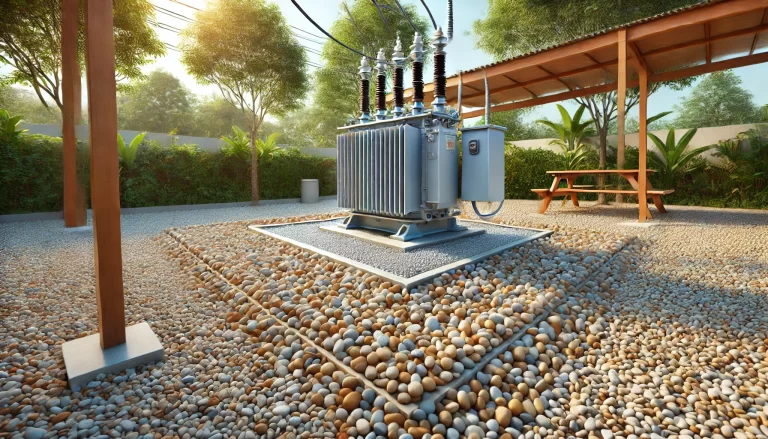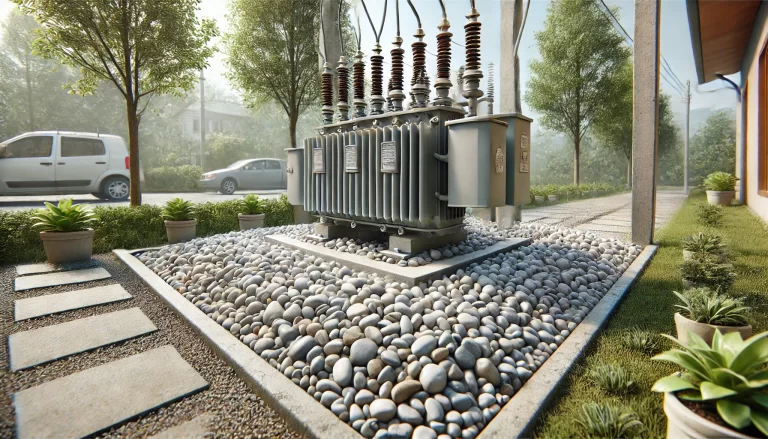Electrical transformers are vital components in our power distribution networks, converting high-voltage electricity to a lower, more manageable voltage for use in homes, businesses, and industrial facilities. Maintaining these transformers in a stable, safe, and efficient environment is essential for their performance and longevity. One common feature in transformer installations that may go unnoticed is the placement of small, rounded stones, or pebbles, beneath the equipment. This article delves into the practical and strategic reasons for using pebbles under transformers, covering safety, moisture control, temperature regulation, and environmental aesthetics.
1. Fire Safety
Electrical transformers operate with high voltages and can sometimes experience electrical faults, short circuits, or surges, leading to significant heat buildup or even sparking. When issues like these occur, there’s a risk of fire, especially in outdoor installations where the transformer is exposed to fluctuating temperatures, dust, and debris. Placing pebbles under transformers serves as a passive fire protection measure. Unlike soil, grass, or other flammable materials, pebbles are naturally non-combustible. This non-flammable barrier reduces the potential for fire to spread in the event of a spark or thermal overload. Additionally, the pebble layer provides a buffer zone, preventing any combustible materials from coming into direct contact with the transformer.

2. Moisture and Drainage Control
Another critical function of pebbles under transformers is to improve drainage and control moisture. Excess moisture can pose several risks to transformers. Water accumulation around the transformer can damage insulation, corrode metal parts, or even cause electrical shorts. Since pebbles naturally create small gaps and voids between them, they allow water to drain more efficiently away from the base of the transformer. This helps prevent puddles or standing water from forming around or under the transformer, which could otherwise lead to damage over time.
Furthermore, pebbles help reduce the overall humidity level immediately around the transformer. By controlling moisture exposure, the pebble layer indirectly protects the transformer’s components, especially metal parts and insulation, from moisture-induced degradation.
3. Enhanced Heat Dissipation
Transformers operate at high temperatures due to the electricity flowing through their components. Excessive heat can reduce efficiency and shorten the lifespan of a transformer. The pebble layer contributes to improved heat dissipation by increasing airflow around the base of the transformer. The small gaps between pebbles allow air to flow freely, assisting with natural heat regulation around the transformer. As warm air rises from the transformer, cooler air can flow in through the pebbles to help dissipate heat more effectively than if the transformer were installed on a solid, heat-trapping surface.

4. Aesthetic and Environmental Management
In addition to functional benefits, using pebbles under transformers contributes to the aesthetic and environmental quality of the installation site. Transformers installed directly on soil are more prone to dust, mud, and even weed growth. Over time, vegetation can become an issue, obscuring access to the equipment and potentially damaging nearby components. Placing pebbles in this area keeps the space clean and tidy, preventing weeds and minimizing the spread of dirt and dust.
Furthermore, the clean and orderly look of pebbles contributes to the visual appeal of utility installations, especially in urban or suburban areas where these components may be close to residential or commercial spaces. With fewer weeds, cleaner access paths, and minimal dust, the pebble setup improves the overall appearance of transformer sites and can help reduce maintenance costs associated with landscaping.
Conclusion
Placing pebbles under electrical transformers is a simple yet effective practice with multiple benefits. From enhancing safety by reducing fire hazards to improving drainage, regulating temperature, and providing environmental control, pebbles play a crucial role in the optimal operation and maintenance of transformers. This setup ensures that transformers continue functioning safely and efficiently, benefiting both power providers and the communities they serve.
